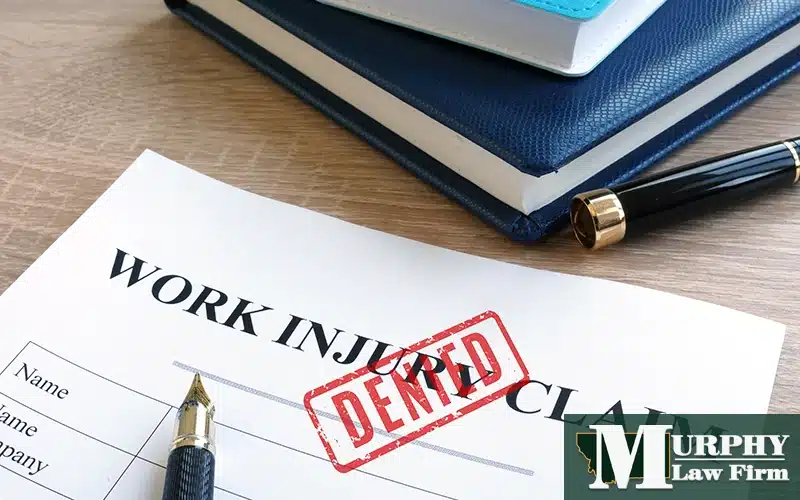
A guide to compensation after suffering an injury or fatality from a hazardous chemical at work in Great Falls
Despite ongoing efforts to improve workplace safety across the U.S., hazardous chemicals continue to be a significant risk in Montana workplaces. From industrial facilities to agricultural settings, employees across many industries face potential dangers associated with chemical substances every day.
If you or a loved one has suffered a serious injury or death due to chemical exposure at work, it’s crucial to understand your rights in the workplace, including your right to receive workers’ compensation benefits.
In this article, we delve into the most common causes of chemical exposures, highlight some of the most hazardous chemicals found in Montana workplaces, discuss the workers most frequently impacted by these exposures, and provide essential guidance on how to navigate the process of filing a workers’ compensation claim to obtain benefits for chemical-related injuries.
How many workers are exposed to chemicals that make them sick?
Many people assume that modern workplace regulations protect workers from exposure to certain dangers, but the reality is that toxic chemicals remain a serious threat to the health of U.S. workers.
In fact, according to the Occupational Safety and Health Administration (OSHA), an estimated 190,000 U.S. workers become ill and another 50,000 die every year from exposure to hazardous chemicals in the workplace.
Which chemicals pose the highest risk to workers?
Some workplace chemicals are more dangerous than others, especially when used in confined spaces. The U.S. Bureau of Labor Statistics (BLS), reported that between 2011-2017, nearly 300 people died from single incidents of inhaling toxic chemicals at work. Of these, about 37% occurred in confined areas.
The top chemicals responsible for workplace fatalities included:
- Carbon monoxide – 116 fatalities
- Hydrogen sulfide – 46 fatalities
- Coal, natural gas, petroleum fuels, and products – 11 fatalities
- Methane gas – 9 fatalities
- Dichloromethane – 8 fatalities
- Solvents and degreasers – 7 fatalities
- Sewer gas – 7 fatalities
- Plastics and resins – 6 fatalities
- Methanol – 5 fatalities
- Toluene – 5 fatalities
- Cleaning and polishing agents – 5 fatalities
Understanding the risks associated with specific chemicals in the workplace, especially in confined spaces, and providing workers with the necessary training and personal protective equipment (PPE) is crucial for preventing fatalities and ensuring worker safety.
Montana Workers’ Compensation for Occupational Illnesses
& Diseases
Learn how to get workers’ comp benefits after developing an occupational illness or disease from your job.
Which workers have the highest risk of chemical exposure?
According to the Centers for Disease Control and Prevention (CDC), incidents in the following top 5 industries accounted for over one-third of chemical-related injuries at work:
- Food manufacturing
- Chemical manufacturing
Chemical manufacturing, in particular, poses significant risks due to the direct handling and production of hazardous substances.
Beyond these industries highlighted by the CDC, workers in agriculture, construction, health care, and automotive repair are also at elevated risk of chemical exposure due to the nature of their work processes and the substances involved.
What are the effects of chemical exposure in the workplace?
Chemical exposure in the workplace can have a wide range of effects on workers, leading to various injuries and health complications, including:
- Burn-related injuries
- Eye irritation or damage
- Skin irritation
- Respiratory issues such as asthma or bronchitis
- Neurological disorders
- Organ damage or failure
Prolonged exposure to certain chemicals may also increase the risk of developing chronic conditions like cancer, reproductive disorders, and hearing damage.
Ototoxic chemicals like solvents, paints, and heavy metals are known to damage the delicate structures of the inner ear over time, leading to gradual hearing impairment. This occupational hazard is especially prevalent in industries such as manufacturing, construction, and mining, where workers are frequently exposed to ototoxic chemicals alongside loud machinery, which can make hearing loss even worse.
Does workers’ comp cover chemical exposure in Montana?
Yes, Montana workers’ compensation does cover injuries and deaths resulting from chemical exposure in the workplace.
This no-fault insurance provides benefits to employees to cover medical expenses and lost wages regardless of fault, meaning that in most cases, workers are entitled to benefits even if they contributed to the incident that resulted in their injury or illness. In cases of death, certain family members are also entitled to death benefits.
However, workers may encounter difficulties with their claims due to various factors. These could include challenges in proving the link between the chemical exposure and the resulting injury or illness, especially if the effects are not immediately apparent or if there is ambiguity regarding which specific chemical or combination of chemicals caused the harm.
Additionally, disputes over the severity of the injury, the extent of disability, or the necessity of medical treatment may arise, leading to delays or denials in compensation.
Furthermore, navigating the workers’ compensation process itself, including filing paperwork, meeting deadlines (including notifying your employer within 30 days), and communicating with insurance providers, can be complex and overwhelming for injured workers, especially if they’re dealing with physical and emotional distress.
Seeking assistance from an experienced workers’ compensation attorney can help workers overcome these challenges and ensure they receive the benefits they’re entitled to under Montana law.
How To Appeal a Workers’ Comp Claim Denial in Montana
Was your Montana workers’ comp claim denied? Learn about your rights and how to file an appeal so you can get the compensation you deserve.
Were you injured by a chemical exposure at work in Great Falls? Murphy Law Firm can help!
If you or a loved one suffered a serious injury, illness, or fatality due to chemical exposure in the workplace, the experienced Great Falls workers’ compensation attorneys at Murphy Law Firm are here to help.
With over 75 years of combined experience, our team understands the complexities of workers’ compensation claims and can provide the guidance and representation you need to navigate the process successfully. Recognizing the importance of proving your injury is work-related, we will work diligently to gather evidence and build a strong case on your behalf.
Additionally, we will meticulously calculate both your past and future medical expenses to ensure you receive the maximum compensation you deserve.
Don’t navigate the complexities of workers’ compensation claims alone; let our dedicated team at Murphy Law Firm advocate for your rights and help you secure the benefits you’re entitled to.
Get started today by scheduling a free consultation.
References
Fatal chemical inhalations in the workplace up in 2017 : The Economics Daily: U.S. Bureau of Labor Statistics. (2019, October 24). Bls.gov. https://www.bls.gov/opub/ted/2019/fatal-chemical-inhalations-in-the-workplace-up-in-2017.htm
Top Five Industries Resulting in Injuries from Acute Chemical Incidents – Hazardous Substance Emergency Events Surveillance, Nine States, 1999-2008. (n.d.). www.cdc.gov. https://www.cdc.gov/mmwr/preview/mmwrhtml/ss6402a7.htm
Transitioning to Safer Chemicals: A Toolkit for Employers and Workers | Occupational Safety and Health Administration. (2023). Osha.gov. https://www.osha.gov/safer-chemicals#:~:text=American%20workers%20use%20tens%20of





